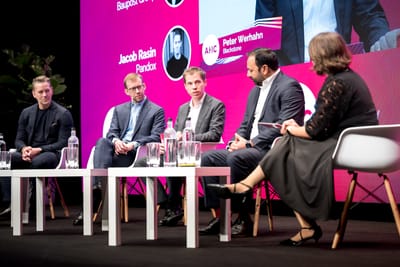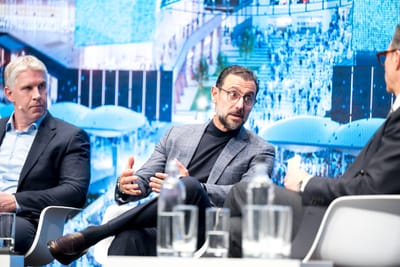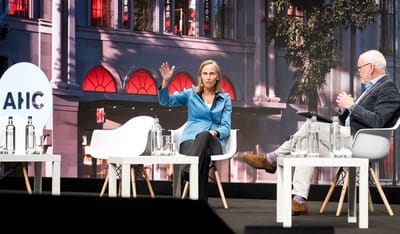LREF 2025: Infrastructure for growth

Speakers: Rob Perrins (Chief Executive, Berkeley Group), Bek Seeley (Chair, Platform4), Howard Dawber (Deputy Mayor for Business & Growth, GLA), Katy Warrick (Head of London Residential Development Research, Savills), chaired by Sophie Rosier (Head of London Mixed Use, Savills).
London’s new “Towards a new London Plan” sets ambitious goals for housing delivery. The panel agreed that those numbers are only reachable if London treats infrastructure as the prime enabler of growth. Transport, energy, social infrastructure, and the finance models that fund them sit at the centre of delivery. The message was plain: London is a supply starved and demand constrained market, and momentum will return only if delivery economics and decision-making shift up a gear.
The market reality: demand is strong, delivery is weak
Katy Warrick of Savills opened with a diagnostic that tied jobs, pipelines, and affordability into a single picture. Jobs remain concentrated in central London. The commercial pipeline is also concentrated in the centre. However, many households who would benefit from that access are priced out. The greatest housing need is in locations where values tend to sit below roughly £800/sq ft. These are exactly the places where viability is most fragile.
“Affordability is pushing households outward, yet many outer London locations remain poorly connected to central employment.” Warrick said.
Larger schemes that exceed 18 meters or around seven storeys face extra risk from the Gateway 2 process and a thicket of compliance. Cost inflation and higher finance costs are then layered on top. The outcome is predictable. Completions undershoot, the bill for temporary accommodation escalates, and the city loses the economic multipliers that come with regeneration. Warrick tied the threads back to infrastructure. Better connectivity shortens commutes, broadens labour catchments, improves phase viability, and creates value that can be recycled back into housing.
Funding tools must match the ambition
Howard Dawber of the GLA connected planning vision to fiscal reality. If the city is to deliver at the pace the Plan implies, it needs permission to fund growth using growth itself. He argued for a greater and more predictable share of locally retained tax, along with the ability to borrow against that growth.
“Raise London’s share of locally retained tax even modestly, then you can unlock the projects that unlock the homes,” he said.
Dawber’s priority list included progressing critical transport extensions, fixing the electricity capacity crunch, and adopting growth linked mechanisms such as value capture, tax increment style tools, and multiyear settlements. He also flagged a refresh of the London Infrastructure Framework, which will set out a clear pipeline across transport, utilities, and energy. That pipeline should anchor conversations with private capital, particularly in green power where occupier demand is already visible.
Developers’ view: help us, declutter policy, de risk the first mile
Rob Perrins of Berkeley Group delivered a direct message. The sector can and should keep building through the cycle, but cumulative policy costs are pushing marginal schemes into red.
“We have to help ourselves, and government has to stop layering costs. Between building safety changes, energy rules, Section 106, CIL and new levies, too many otherwise good schemes move from marginal to unviable,” he said.
Perrins set out three practical moves. First, policy decluttering and a viability cap at scheme level, which would give lenders and boards a clear ceiling. Second, front loaded enabling infrastructure, especially power and access, supported by public balance sheet where the payback is clear. Third, faster and clearer processes from consultees through to conditions discharge so that capital is not trapped for months while carrying high interest.
He also warned that high build costs and expensive debt make submarket tenures particularly fragile. For affordable housing and rental, delay and uncertainty destroy the numbers. Momentum matters.
Investability and liveability need to run in parallel
Bek Seeley of Platform4 argued that place making and investability must advance together. Communities need visible near-term benefits. Investors need predictable returns for taking real risk. “We have come a long way on liveability. We now need to run investability in parallel. Do both,” Seeley said.
Her most actionable idea was to use small and medium infrastructure interventions to bring forward earlier housing. Junction fixes, last mile connections, local energy solutions, and social capacity can improve cash flow and keep lenders engaged. These steps protect momentum while larger multiyear schemes, such as new lines or substations, grind through delivery. In her words, every city scale project is a portfolio of smaller actions. Break it down, sequence it, and get two new entrances open rather than waiting for a perfect masterplan.
Is housing being treated as economic infrastructure
Chair Sophie Rosier probed whether housing is finally being treated like essential economic infrastructure. Dawber’s response was cautious. In central government accounting, housing spend still looks like a cost rather than an asset that reduces welfare bills, raises productivity, and expands the tax base. Until the lens changes, housing as infrastructure will struggle to move from slogan to spreadsheet.
There was progress on measurement. Warrick described work with Places for London that quantifies not only homes and floorspace but also health outcomes, education outcomes, and tax uplift. Evidence like this strengthens value capture cases and supports multiyear budget requests.
Power is the new planning risk
The sharpest consensus concerned electricity. London needs to double effective power capacity, while unblocking connections and strengthening the grid. That pushes on site and near site generation, private wire, and local energy networks up the agenda. It also creates investable opportunities where demand is presold by digital, life sciences, and prime offices that are chasing net zero.
“There is no demand problem for green power in London. There is a time to connect problem,” Dawber noted. “Solve that and you accelerate jobs and homes.”
Five signals for investors and lenders
- Devolution and value capture. Even small steps on retained taxes or hypothecated business rates can switch multiple projects from amber to green. Track the Infrastructure Framework refresh for early bankable pilots.
- Grid and local energy. Co invested solutions such as private wire, storage, and neighbourhood heat will move onto the critical path for mixed use estates. Expect more platform style deals rather than one off assets.
- Phasing and cash flow. Micro interventions that unlock earlier units can repair IRRs and keep debt in place. Lenders will prize schemes with shovel ready first mile packages.
- Process certainty. Planning acceleration and clearer gateway requirements feed directly into lower contingency and cheaper capital. Borough level best practice will attract flows of private capital.
- Measured outcomes. Projects that track education, health, and productivity benefits will win public co funding and patient capital. The narrative is shifting from unit counts to economic value creation.
Subscribe to our newsletter.
Become a subscriber receive the latest updates in your inbox.






